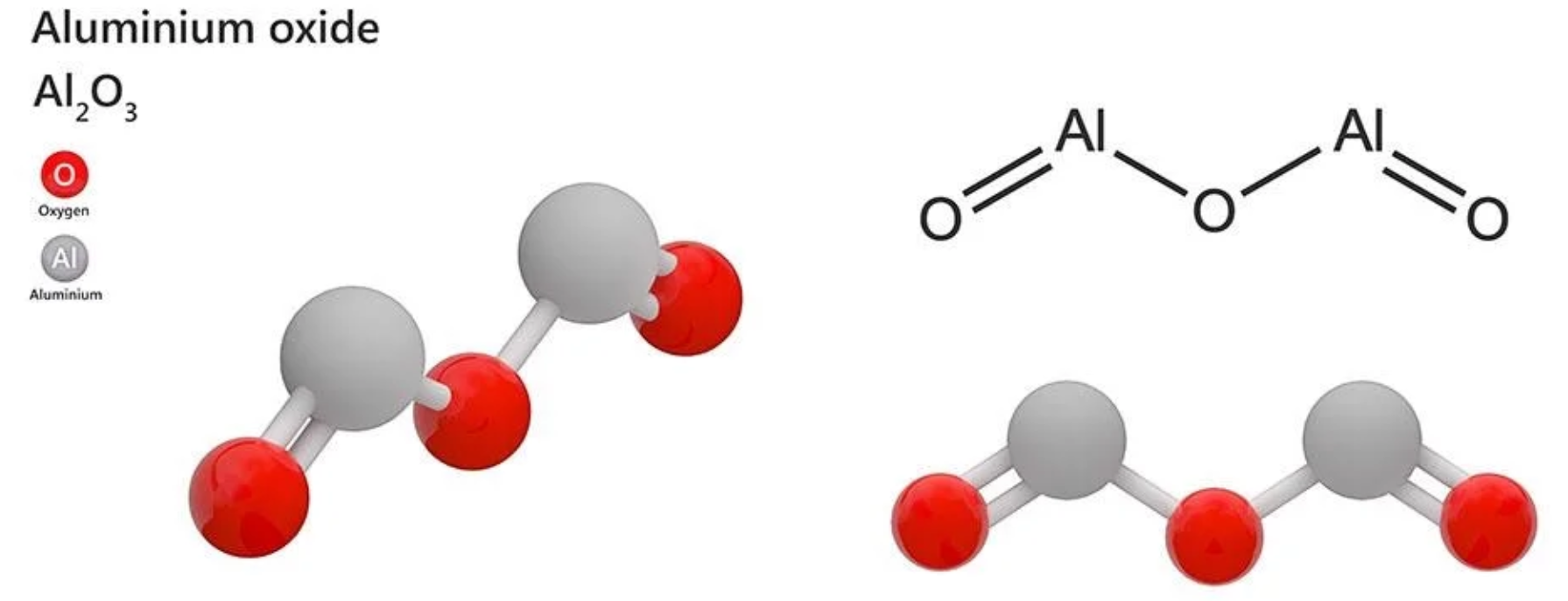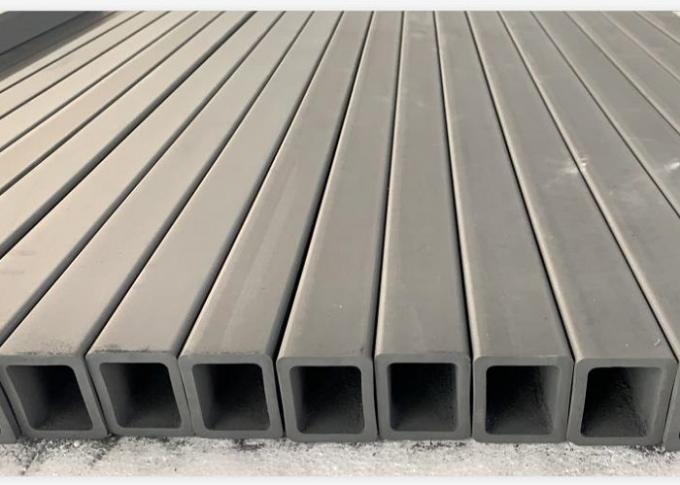♦Alumina(Al2O3)
The precision ceramic parts produced by ZhongHui Intelligent Manufacturing Group(ZHHIMG) can be made of high-purity ceramic raw materials, 92~97% alumina, 99.5% alumina, >99.9% alumina, and CIP cold isostatic pressing. High temperature sintering and precision machining, dimensional accuracy of ± 0.001mm, smoothness up to Ra0.1, use temperature up to 1600 degrees. Different colors of ceramics can be made according to customers' requirements, such as: black, white, beige, dark red, etc. The precision ceramic parts produced by our company are resistant to high temperature, corrosion, wear and insulation, and can be used for a long time in high temperature, vacuum and corrosive gas environment.
Widely used in a variety of semiconductor production equipment: Frames (ceramic bracket), Substrate (base), Arm/ Bridge(manipulator), , Mechanical Components and Ceramic Air Bearing.
| Product Name | High Purity 99 Alumina Ceramic Square Tube / Pipe / Rod | |||||
| Index | Unit | 85 % Al2O3 | 95 % Al2O3 | 99 % Al2O3 | 99.5 % Al2O3 | |
| Density | g/cm3 | 3.3 | 3.65 | 3.8 | 3.9 | |
| Water Absorption | % | <0.1 | <0.1 | 0 | 0 | |
| Sintered Temperature | ℃ | 1620 | 1650 | 1800 | 1800 | |
| Hardness | Mohs | 7 | 9 | 9 | 9 | |
| Bending Strength(20℃)) | Mpa | 200 | 300 | 340 | 360 | |
| Compressive Strength | Kgf/cm2 | 10000 | 25000 | 30000 | 30000 | |
| Long Time Working Temperature | ℃ | 1350 | 1400 | 1600 | 1650 | |
| Max. Working Temperature | ℃ | 1450 | 1600 | 1800 | 1800 | |
| Volume Resistivity | 20℃ | Ω. cm3 | >1013 | >1013 | >1013 | >1013 |
| 100℃ | 1012-1013 | 1012-1013 | 1012-1013 | 1012-1013 | ||
| 300℃ | >109 | >1010 | >1012 | >1012 | ||
Application of high purity alumina ceramics:
1. Applied to semiconductor equipment: ceramic vacuum chuck, cutting disc, cleaning disc, ceramic CHUCK.
2. Wafer transfer parts: wafer handling chucks, wafer cutting discs, wafer cleaning discs, wafer optical inspection suction cups.
3. LED / LCD flat panel display industry: ceramic nozzle, ceramic grinding disc, LIFT PIN, PIN rail.
4. Optical communication, solar industry: ceramic tubes, ceramic rods, circuit board screen printing ceramic scrapers.
5. Heat-resistant and electrically insulating parts: ceramic bearings.
At present, aluminum oxide ceramics can be divided into high purity and common ceramics. The high purity aluminum oxide ceramics series refers to the ceramic material containing more than 99.9% Al₂O₃. Because of its sintering temperature of up to 1650 - 1990°C and its transmission wavelength of 1 ~ 6μm, it is usually processed into fused glass instead of platinum crucible: which can be used as sodium tube owing to its light transmittance and corrosion resistance to alkali metal. In the electronics industry, it can be used as the high-frequency insulating material for IC substrates. According to different contents of aluminum oxide, the common aluminum oxide ceramic series can be divided into 99 ceramics, 95 ceramics, 90 ceramics and 85 ceramics. Sometimes, the ceramics with 80% or 75% of aluminum oxide is also classified as common aluminum oxide ceramic series. Among them, 99 aluminum oxide ceramic material is used to produce high-temperature crucible, fireproofing furnace tube and special wear-resistant materials, such as ceramic bearings, ceramic seals and valve plates. 95 aluminum ceramics is mainly used as corrosion-resistant wear-resisting part. 85 ceramics is often mixed in some properties, thereby improving electrical performance and mechanical strength. It can use molybdenum, niobium, tantalum and other metal seals, and some are used as electric vacuum devices.
| Quality Item (Representative Value) | Product Name | AES-12 | AES-11 | AES-11C | AES-11F | AES-22S | AES-23 | AL-31-03 | |
| Chemical Composition Low-Sodium Easy Sintering Product | H₂O | % | 0.1 | 0.1 | 0.1 | 0.1 | 0.1 | 0.1 | 0.1 |
| L.O.l | % | 0.1 | 0.2 | 0.1 | 0.1 | 0.1 | 0.1 | 0.1 | |
| Fe₂0₃ | % | 0.01 | 0.01 | 0.01 | 0.01 | 0.01 | 0.01 | 0.01 | |
| SiO₂ | % | 0.03 | 0.03 | 0.03 | 0.03 | 0.02 | 0.04 | 0.04 | |
| Na₂O | % | 0.04 | 0.04 | 0.04 | 0.04 | 0.02 | 0.04 | 0.03 | |
| MgO* | % | - | 0.11 | 0.05 | 0.05 | - | - | - | |
| Al₂0₃ | % | 99.9 | 99.9 | 99.9 | 99.9 | 99.9 | 99.9 | 99.9 | |
| Medium Particle Diameter (MT-3300, laser analysis method) | μm | 0.44 | 0.43 | 0.39 | 0.47 | 1.1 | 2.2 | 3 | |
| α Crystal Size | μm | 0.3 | 0.3 | 0.3 | 0.3 | 0.3 ~ 1.0 | 0.3 ~ 4 | 0.3 ~ 4 | |
| Forming Density** | g/cm³ | 2.22 | 2.22 | 2.2 | 2.17 | 2.35 | 2.57 | 2.56 | |
| Sintering Density** | g/cm³ | 3.88 | 3.93 | 3.94 | 3.93 | 3.88 | 3.77 | 3.22 | |
| Shrinking Rate of Sintering Line** | % | 17 | 17 | 18 | 18 | 15 | 12 | 7 | |
* MgO is not included in the calculation of purity of Al₂O₃.
* No scaling powder 29.4MPa (300kg/cm²), sintering temperature is 1600°C.
AES-11 / 11C / 11F: Add 0.05 ~ 0.1% MgO, the sinterability is excellent, so it is applicable to aluminum oxide ceramics with the purity of more than 99%.
AES-22S: Characterized by high forming density and low shrinking rate of sintering line, it is applicable to slip form casting and other large-scale products with required dimensional accuracy.
AES-23 / AES-31-03: It has a higher forming density, thixotropy and a lower viscosity than AES-22S. the former is used to ceramics while the latter is used as water reducer for fireproofing materials, gaining popularity.
♦Silicon Carbide (SiC) Characteristics
| General Characteristics | Purity of main components (wt%) | 97 | |
| Color | Black | ||
| Density (g/cm³) | 3.1 | ||
| Water absorption (%) | 0 | ||
| Mechanical Characteristics | Flexural strength (MPa) | 400 | |
| Young modulus (GPa) | 400 | ||
| Vickers hardness (GPa) | 20 | ||
| Thermal Characteristics | Maximum operating temperature (°C) | 1600 | |
| Thermal expansion coefficient | RT~500°C | 3.9 | |
| (1/°C x 10-6) | RT~800°C | 4.3 | |
| Thermal conductivity (W/m x K) | 130 110 | ||
| Thermal shock resistance ΔT (°C) | 300 | ||
| Electrical Characteristics | Volume resistivity | 25°C | 3 x 106 |
| 300°C | - | ||
| 500°C | - | ||
| 800°C | - | ||
| Dielectric constant | 10GHz | - | |
| Dielectric loss (x 10-4) | - | ||
| Q Factor (x 104) | - | ||
| Dielectric breakdown voltage (KV/mm) | - | ||
♦Silicon Nitride Ceramic
| Material | Unit | Si₃N₄ |
| Sintering Method | - | Gas Pressure Sintered |
| Density | g/cm³ | 3.22 |
| Color | - | Dark Grey |
| Water Absorption Rate | % | 0 |
| Young Modulus | Gpa | 290 |
| Vickers Hardness | Gpa | 18 - 20 |
| Compressive Strength | Mpa | 2200 |
| Bending Strength | Mpa | 650 |
| Thermal Conductivity | W/m.K | 25 |
| Thermal Shock Resistance | Δ (°C) | 450 - 650 |
| Maximum Operating Temperature | °C | 1200 |
| Volume Resistivity | Ω·cm | > 10 ^ 14 |
| Dielectric Constant | - | 8.2 |
| Dielectric Strength | kV/mm | 16 |


